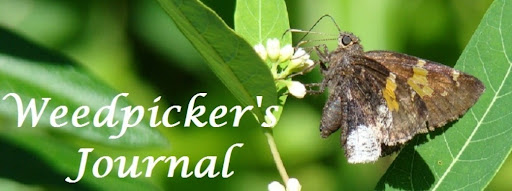If your idea of a perfect snow day includes browsing seed catalogs, we must be friends. Back in the days I ran a greenhouse, Stokes was one of my favorite catalogs. It offers extremely detailed information on seed germination and is an excellent resource for planting information. If you have ever pondered the terms "scarify" or "stratify," Stokes is for you.
 |
| Plant like the professionals! |
It is never too early to think about planting. However, January is too early to actually plant, unless you have access to grow lights or a green house. Raising your own flowers and vegetables can be very therapeutic. You can even grow them in the same beds, or try adding berry plants in your landscape. Here at home we have blueberries and strawberries festooning the shrub bed. What could be better than having your landscape and eating it too?
 |
| A good variety of potted plants from Native in Harmony nursery. |
 |
| Weedpicker- planting native plants in the Lakeside landscape. |
Planting a native plant garden is not very different than planting any other garden. You should assess the soil, day light and water available to the garden. A native garden is more likely to use plants that will thrive in the local soil, where horticultural gardens often amend soils to nurture plants that would not be native. For example in mid-Ohio clay-based soils, we would have to add peat-moss and acid to grow azaleas. Or, we might add sand to our soil to grow succulents.
Native plants host native wildlife, like this moth caterpillar.
Anyone know what moth this will become?
The landscape we planted last fall in Lakeside was comprised of Ohio native plants. These plants are suitable for the soil along the lakefront and were chosen for their durability and sun tolerance. The grasses were used to stabilize the lake shore and reduce erosion. Many were one gallon potted plants, but some were even smaller. I prefer using younger plant material and allowing it to become established in situ.

Do you know of other nurseries specializing in native plants,which should be included on this map? Or do you know of seed vendors who supply the native plant seeds we might like to grow?
Leave me a note in comment section below and I will be happy to pass the info on to LEAP.
Now, back to my seed catalog...


No comments:
Post a Comment